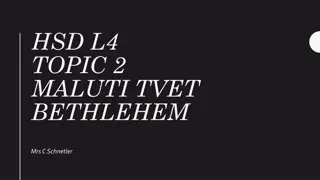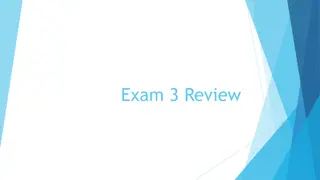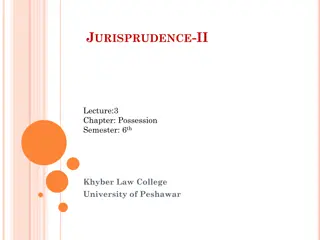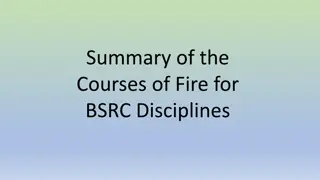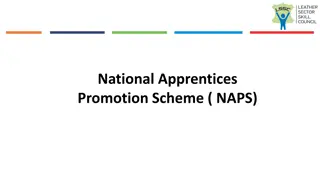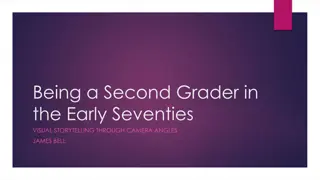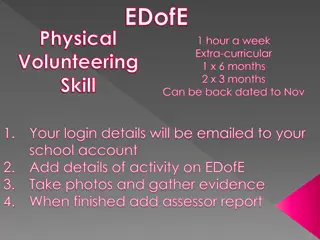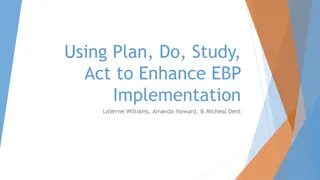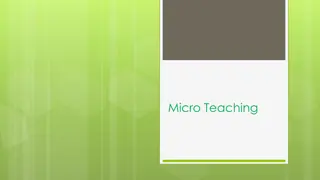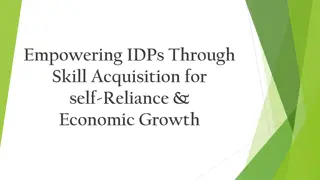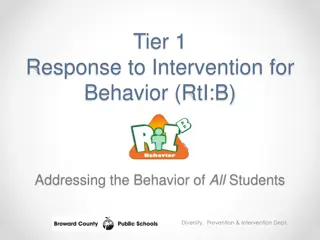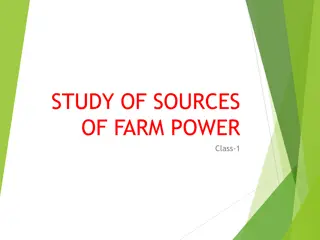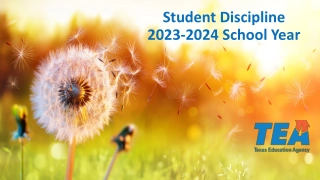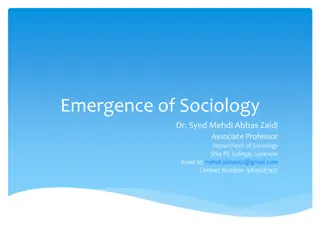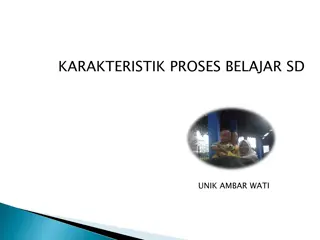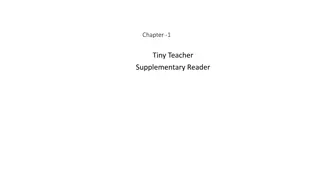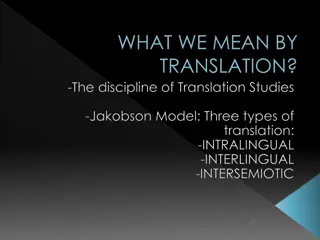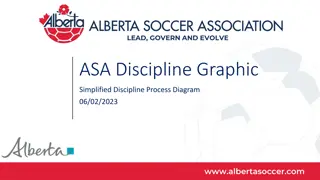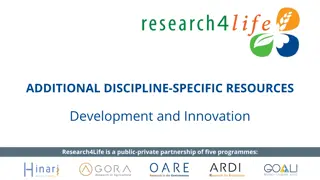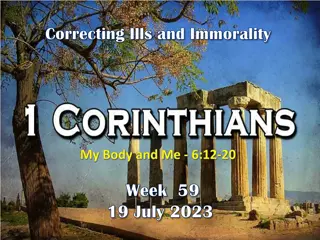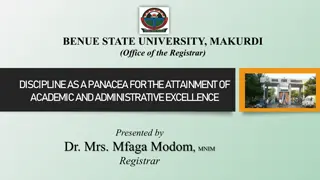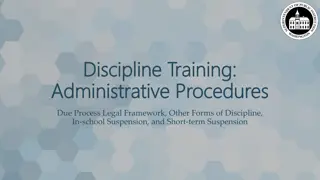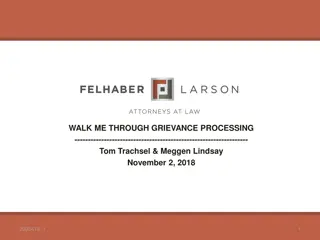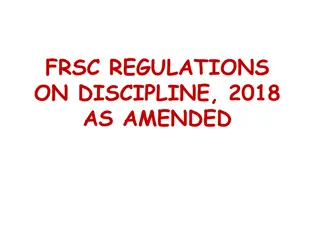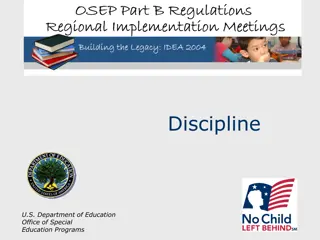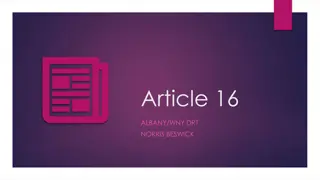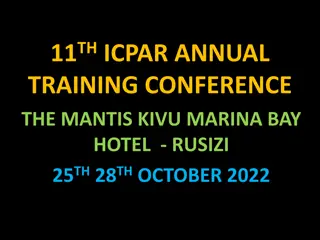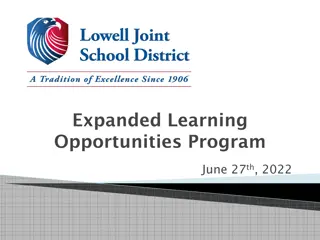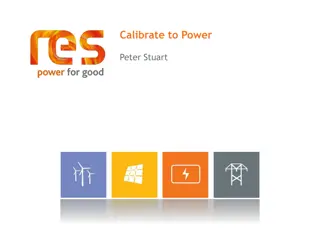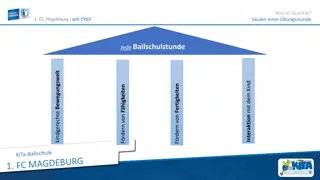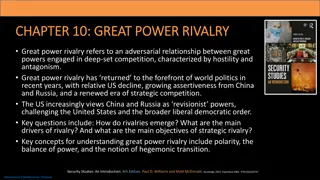Conscious Discipline & Learning: Power of Intention and Skill of Consequence
Understanding the importance of creating a safe and connected environment for learning, the power of intention in viewing mistakes as opportunities for growth, and the skill of learning from consequences. Emphasizing natural consequences as powerful tools for behavior learning.
Download Presentation

Please find below an Image/Link to download the presentation.
The content on the website is provided AS IS for your information and personal use only. It may not be sold, licensed, or shared on other websites without obtaining consent from the author. Download presentation by click this link. If you encounter any issues during the download, it is possible that the publisher has removed the file from their server.
E N D
Presentation Transcript
CONSEQUENCES CONSCIOUS DISCIPLINE PRESENTED BY: TIFFANY TOUCHIN DEC FAMILY SERVICE PROVIDER
BRAIN START SMART Children can only learn when they feel physically and emotionally safe. The same goes for adults. If we are distracted, anxious, disappointed or stressed, we re not going to accomplish very much. So best practice is to start with a brain smart start to get the blood flowing, get ourselves connected and prepare our brains for a day of learning, just as we want for our children. The Brain Mart Start creates an ideal state for learning and problem solving called an Executive State. This state is calm, focused and alert. This connection and calm yet, energized feeling is the ideal state for you to problem solve from and for your children to learn in. Anything you can do to create that inner state at home deep belly breathing, I Love You Rituals, A family motto, chant, playful song- all of this is going to be tremendously helpful to the health of your family and to your child s success in life. A lifetime of success starts with safety and connection.
POWER OF INTENTION Power of Intention states that mistakes are opportunities to learn. Learning comes through experimentation and failure, both social and academic. Our job as adults is to create an environment where children not only are safe, but also feel physically and emotionally safe enough to learn. Our intent is powerful in this endeavor. The intent we choose will lead us to punish, save, control or teach. 1-Recognize our mistake. OOPS 2- Own your mistake while knowing they have absolutely no impact in our self worth. I am still Wonderful 3-Learn a new skill or try a different way. Now, let s learn! Seeing mistakes as opportunities to learn is essential to our person growth and to the healthy development of our children. When you see kids makes mistakes whether they are two years old or 22 years old, think OOPS You re are still wonderful. Now, lets learn! And teach what ever skill is missing. ALL mistakes are opportunities to learn, if we just see them as such.
SKILL OF CONSEQUENCE Learning from the consequences of our action requires two things: 1-We must reflect on the choices and the outcomes in relation to our long-term goal. Ex: Is eating pizza in alignment with my goal to lose weight? OR was the child throwing his sippy cup at you helpful in his goal to get more drink? 2-We must take ownership of our choices and the feelings they generate within. I feel disappointed that I ve delayed reaching my weight loss goal. He felt angry about running out of milk. In the example above, the discomfort of my disappointment would help motivate me to choose (1) slice of pizza rather than the whole pizza next time. Or the discomfort of the anger and subsequent disappointment that throwing his sippy cup didn t get it filled would motivate the child to learn as we teach him to say More. Please. Consequences are a tool we use to motivate children to learn a new skill and use skills they already possess. It can be difficult to watch children feel uncomfortable due to the results of their choices, but this discomfort when coupled with our authentic empathy to help manage their emotions- is essential to the learning process. In Conscious Discipline, we use three basic types of consequences: natural, logical and imposed.
NATURAL CONSEQUENCES Natural consequence are the basic impact of an action or lack of action. Natural consequences are the most powerful tools for learning new behavior. Allow them to happen whenever it is safe. Letting children try and fail in a physically and emotionally safe environment so they can learn from their mistakes. Our job is to follow up with empathy and problem solving, not to prevent, save or belittle.
LOGICAL CONSEQUENCE Natural consequences are the most powerful and effective consequence we can use. Use them whenever it is possible. When it is not possible to rely on natural consequence, we may want to use a logical consequence. Logical consequence only work with children who have shown repeatedly that they know how to do the desired behavior and who feel connected. Children who don t have a firm grip on the skill or who feel disconnected will not respond well to the logical consequence. In fact, logical consequences may worsen the situation.
PROBLEM SOLVING Problem solving is the process of recognizing a missing skill and teaching it in a way that children are able to hear and learn. Problem solving invites children to become part of the solution. All consequences, especially problem solving, require us to use all the skills of Conscious Discipline and operate from a problem solving executive state.



